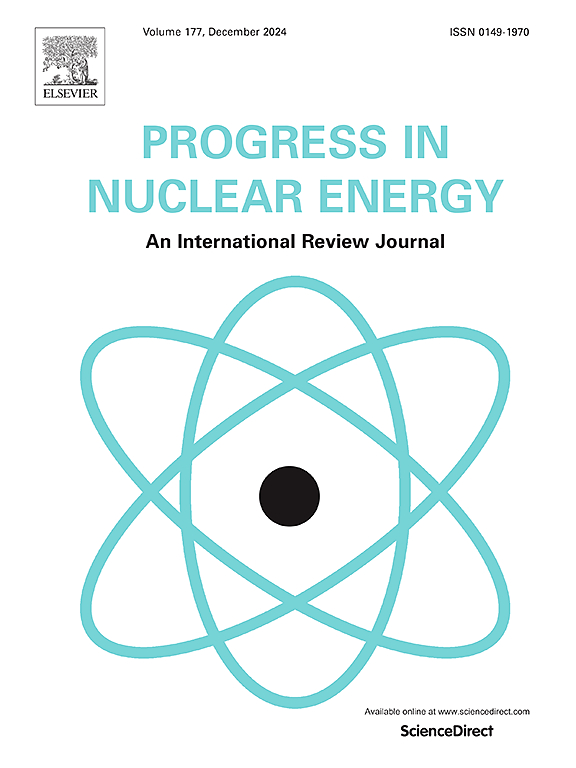Research on design and optimization method for a supercritical CO2 centrifugal compressor for gas-cooled micro reactors
IF 3.3
3区 工程技术
Q1 NUCLEAR SCIENCE & TECHNOLOGY
引用次数: 0
Abstract
The supercritical carbon dioxide(sCO₂) Brayton cycle shows significant advantages over the steam Rankine cycle due to its compact size, minimal space requirements, and high energy density. It has become a highly promising research direction in the field of fourth-generation nuclear reactors. The compressor, a core component of this cycle, plays a crucial role in ensuring system efficiency and stable operation. Among various typical compressors, the centrifugal compressor stands out as an excellent choice for the sCO₂ Brayton cycle due to its compact size, ease of manufacturing and installation, superior performance, and efficient operation. The conventional one-dimensional (1D) centrifugal compressor design does not accurately reflect the flow and compression process especially near the critical point, while the conventional three-dimensional (3D) design lacks boundary conditions and geometric parameter selection basis, therefore, this paper proposes an effective combination method of 1D and 3D design. First, this paper introduces the orthogonal test method to determine the primary parameters for the 1D design of sCO₂ centrifugal compressors, which shows an effective reduction in workload. Next, after validating the design method, the design and optimization of a 300 kW sCO2 compressor in 3D has been carried out. Performance curves are obtained under different blade wrap angles and tip clearances. The optimal values of blade wrap angle and tip clearance of the compressor are identified using the sensitivity analysis. Finally, the performance of the optimized centrifugal compressor has been investigated through numerical simulation under several rotational speeds, inlet pressures, and inlet temperatures around the set operating conditions. This research holds significant implications for the design of sCO₂ centrifugal compressors in gas-cooled micro reactors.
求助全文
约1分钟内获得全文
求助全文
来源期刊

Progress in Nuclear Energy
工程技术-核科学技术
CiteScore
5.30
自引率
14.80%
发文量
331
审稿时长
3.5 months
期刊介绍:
Progress in Nuclear Energy is an international review journal covering all aspects of nuclear science and engineering. In keeping with the maturity of nuclear power, articles on safety, siting and environmental problems are encouraged, as are those associated with economics and fuel management. However, basic physics and engineering will remain an important aspect of the editorial policy. Articles published are either of a review nature or present new material in more depth. They are aimed at researchers and technically-oriented managers working in the nuclear energy field.
Please note the following:
1) PNE seeks high quality research papers which are medium to long in length. Short research papers should be submitted to the journal Annals in Nuclear Energy.
2) PNE reserves the right to reject papers which are based solely on routine application of computer codes used to produce reactor designs or explain existing reactor phenomena. Such papers, although worthy, are best left as laboratory reports whereas Progress in Nuclear Energy seeks papers of originality, which are archival in nature, in the fields of mathematical and experimental nuclear technology, including fission, fusion (blanket physics, radiation damage), safety, materials aspects, economics, etc.
3) Review papers, which may occasionally be invited, are particularly sought by the journal in these fields.
 求助内容:
求助内容: 应助结果提醒方式:
应助结果提醒方式:


